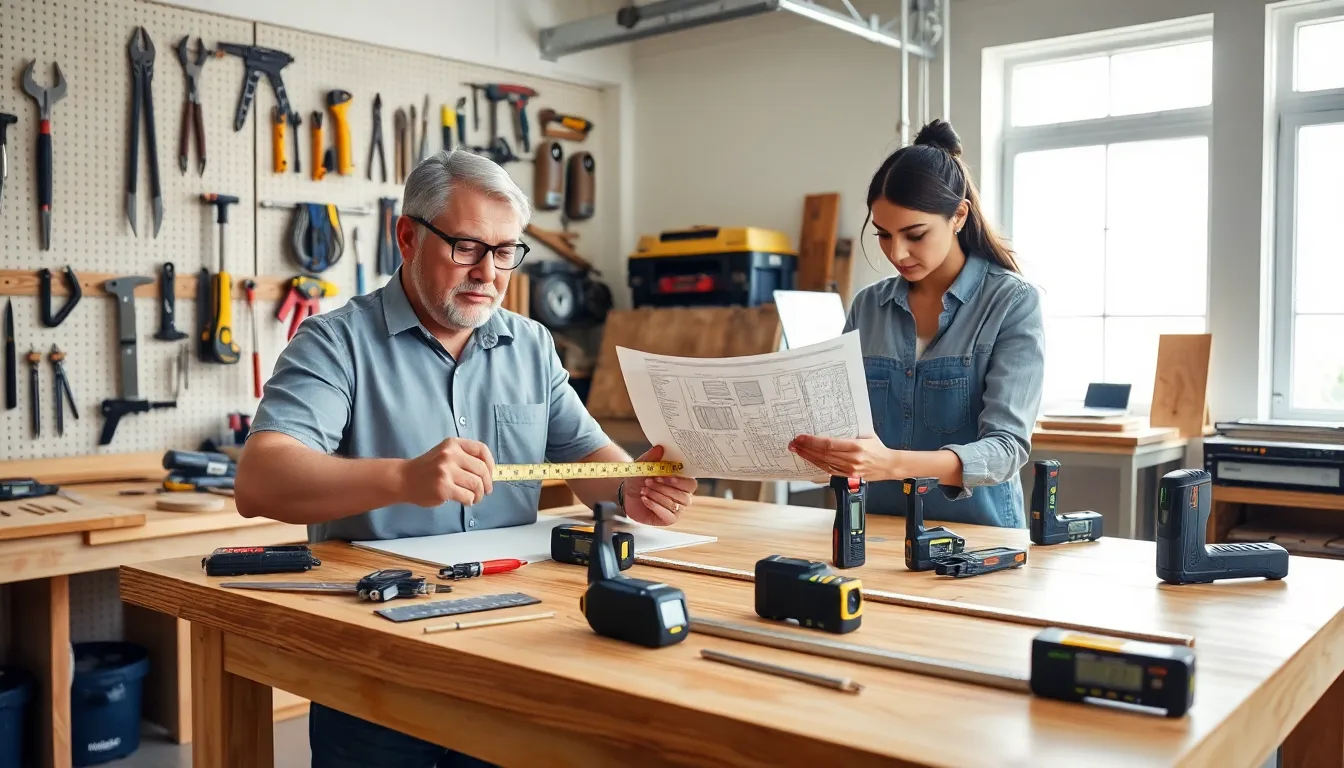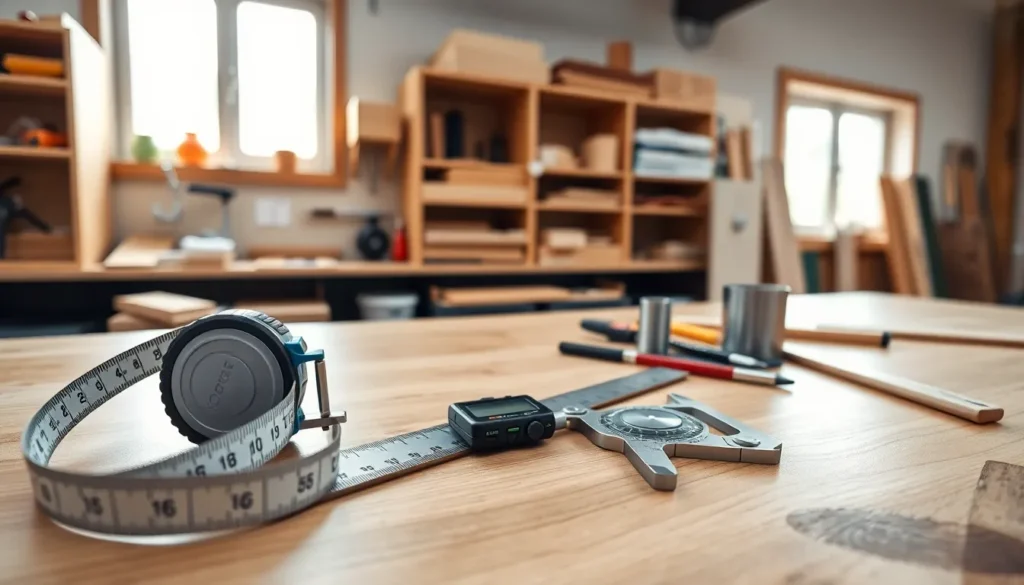Table of Contents
ToggleMeasuring tools in a workshop are like a GPS for a road trip: without them, you might end up in the middle of nowhere, or worse, spending hours on a project only to realize you’ve cocked it up. Whether you’re a seasoned pro, DIY aficionado, or someone who just can’t resist playing Bob the Builder on weekends, accurate measurements are crucial. They save time, materials, and sanity. Let’s dig into why accurate measurements matter, the different types of measuring tools available, and how to keep them in tip-top shape. Trust me, your future self will thank you.
Importance of Accurate Measurements

In any workshop, accurate measurements lay the foundation for quality work. Picture this scenario: you meticulously cut a piece of wood, only to discover it’s an inch too short because you miscalculated the dimensions. Frustrating, right? Precise measurements not only enhance the quality of the project but also boost efficiency. Here’s why they’re essential:
- Quality Assurance: Precision translates to better fitting parts, whether you’re assembling furniture or constructing a delicate model.
- Cost Efficiency: Incorrect measurements can waste materials, leading to higher costs for replacements and additional time spent redoing tasks.
- Safety: Inaccuracies can compromise safety, particularly in construction or DIY projects involving heavy machinery.
Eventually, the meticulousness with which measurements are taken is directly proportional to the craftsmanship of the end product. It’s simple: Less mistakes equal more masterpieces.
Types of Measuring Tools
Understanding the various types of measuring tools is crucial for any workshop. Each tool serves a specific purpose, catering to different aspects of measurement needs. Here’s a breakdown:
1. Linear Measuring Tools
These tools measure lengths, width, and height. Common types include:
- Tape Measure: Flexible and often used for measuring straight distances.
- Ruler: Great for small projects or precise measurements in layouts.
- Caliper: Ideal for measuring internal and external dimensions with accuracy.
2. Angle Measuring Tools
When working with angles, a different set of tools comes into play:
- Protractor: Used extensively in geometry, it helps in measuring angles effectively.
- Bevel Gauge: Perfect for transferring angles when cutting materials.
- Digital Angle Finder: A modern twist that provides precise digital readings.
3. Volume and Capacity Measuring Tools
To ease calculations for liquids or materials:
- Measuring Cups: Standard in kitchens and DIY scenarios.
- Graduated Cylinders: Used mainly in labs but handy for precise measurements in workshops.
- Basin Scale: Useful for larger measurements, especially in woodworking.
Features to Consider When Choosing Tools
Selecting the right measuring tools is more than just picking the first shiny object. Several features can enhance your efficiency and precision:
- Accuracy: Look for tools that provide precise readings. A good tool should have a low margin of error.
- Ease of Use: The tool should be user-friendly. Complicated gadgets can lead to mistakes.
- Durability: Investing in high-quality materials will save headaches. Choose tools that can withstand wear and tear.
- Portability: Consider how and where you’ll be using these tools. Lightweight and compact tools are easier to handle.
- Calibration: Regularly checking the calibration of your tools ensures ongoing accuracy. Some tools even come with self-calibrating features.
Best Practices for Using Measuring Tools
Using measuring tools effectively goes beyond simply having the right equipment. Here are some best practices:
- Always Double-Check Measurements: Measure twice, cut once. This age-old saying rings particularly true in workshops.
- Use Tools as Intended: Avoid using gadgets for unintended purposes. This can lead to inaccurate measurements and potential damage.
- Read at Eye Level: For tools like tape measures or rulers, always read measurements at eye level to avoid parallax errors.
- Take Your Time: Rushing can lead to mistakes. Take your time to ensure your measurements are correct.
- Keep a Measurement Log: For extensive projects, consider keeping a log of measurements to avoid confusion later on.
Maintaining Your Measuring Tools
Just like any other tool in the workshop, measuring tools need regular maintenance to ensure longevity and accuracy. Here’s how you can care for them:
- Clean Regularly: Dust and debris can accumulate. Wipe tools down to ensure they’re clean before and after use.
- Store Properly: Avoid throwing measuring tools into the toolbox haphazardly. Use cases or dedicated slots to protect them from damage.
- Check for Wear and Tear: Look for cracks, bends, or other signs of degradation. Addressing issues early can prevent bigger problems down the line.
- Calibrate Frequently: Regular calibration is key, especially for precision tools. This ensures readings remain accurate.





